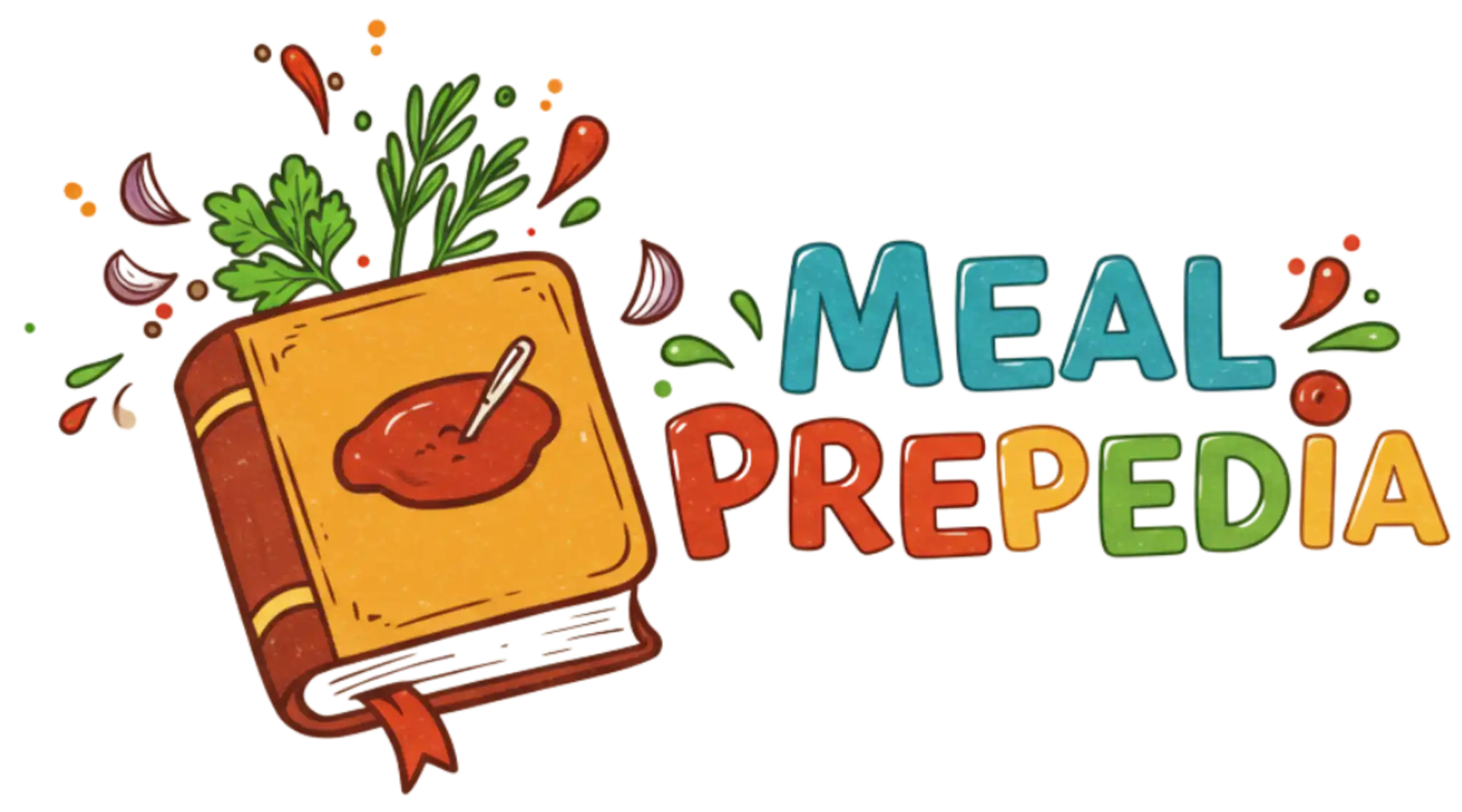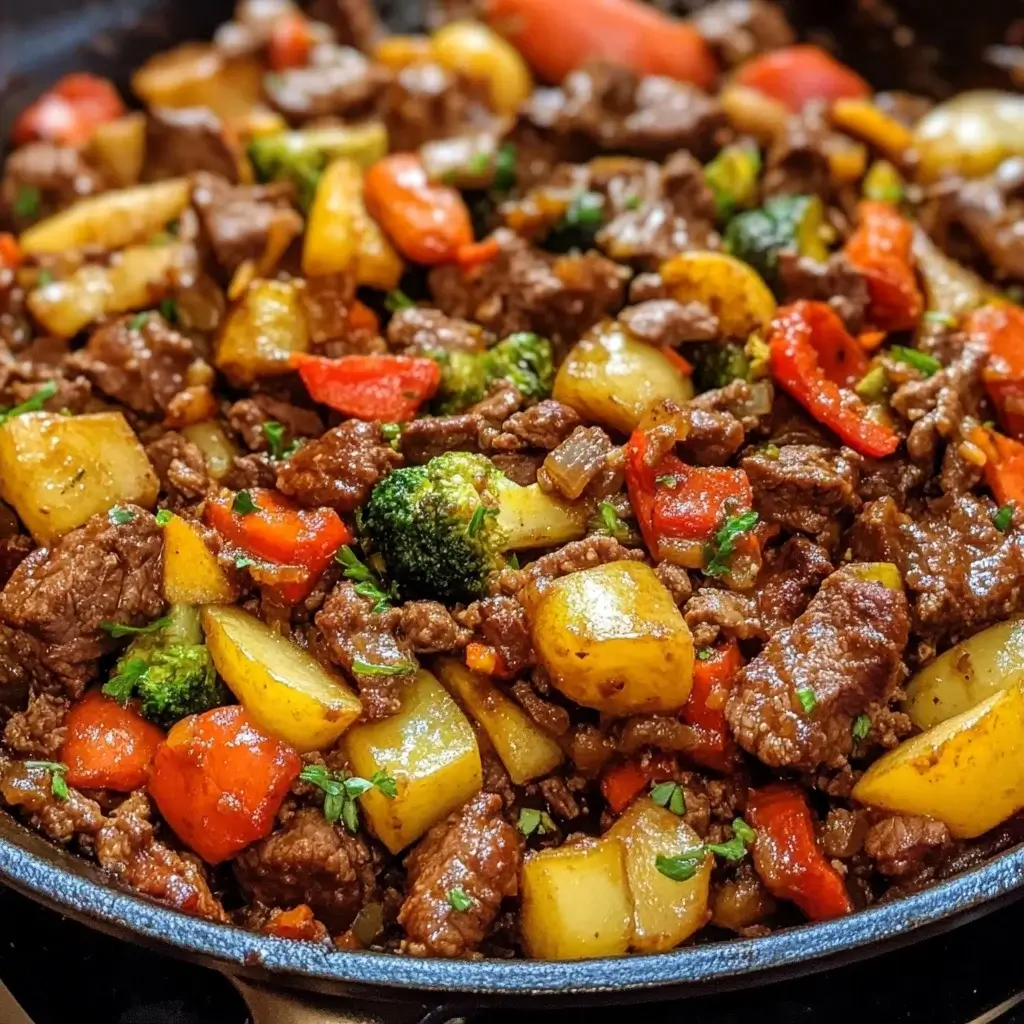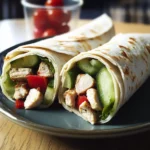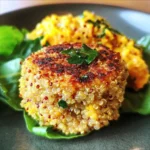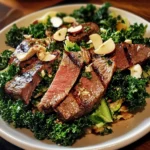Growing up, Easter was always a huge family affair, centered around delicious food and joyful gatherings. While ham and lamb often took center stage, I was always on the lookout for something a bit different, something that could capture the freshness of spring and the heartiness we crave after a long winter. This Easter Beef & Veggie Skillet recipe has become a new family favorite, a vibrant and flavorful dish that’s both incredibly easy to make and satisfyingly wholesome. The tender beef, bursting with savory goodness, combined with the bright, crisp-tender vegetables, creates a symphony of textures and tastes that everyone at our table absolutely adored. Even my picky eaters cleaned their plates, which is always a win! This skillet meal is not only delicious but also incredibly convenient, making it perfect for a relaxed Easter celebration or any weeknight dinner. It’s become a staple in our spring menu, and I’m so excited to share this recipe with you, hoping it brings as much joy and deliciousness to your table as it has to ours.
Ingredients
- 1.5 lbs Beef Stew Meat: Cut into 1-inch cubes, providing a hearty and flavorful base for the skillet.
- 1 tbsp Olive Oil: For sautéing and browning, adding healthy fats and enhancing flavor.
- 1 large Yellow Onion: Chopped, contributing sweetness and aromatic depth to the dish.
- 2 cloves Garlic: Minced, adding a pungent and savory note that complements the beef and vegetables.
- 1 lb Baby Potatoes: Halved or quartered if large, offering creamy texture and wholesome carbohydrates.
- 1 lb Asparagus: Trimmed and cut into 2-inch pieces, providing a fresh, spring-like flavor and vibrant green color.
- 1 cup Frozen Peas: Adding a touch of sweetness and vibrant green, easily incorporated for convenience.
- 2 medium Carrots: Peeled and sliced into rounds, contributing sweetness, color, and essential nutrients.
- 1 Red Bell Pepper: Cored, seeded, and chopped, adding sweetness, crunch, and vibrant color.
- 1 Yellow Bell Pepper: Cored, seeded, and chopped, complementing the red pepper with sweetness and visual appeal.
- 1 cup Beef Broth: Low sodium, providing moisture and enriching the savory flavors of the skillet.
- 2 tbsp Dijon Mustard: Adding a tangy and slightly spicy depth of flavor that balances the richness of the beef.
- 1 tbsp Worcestershire Sauce: Enhancing the umami and savory notes of the beef and sauce.
- 1 tsp Dried Thyme: Providing an earthy and aromatic herb flavor that complements beef and vegetables.
- 1 tsp Dried Rosemary: Adding a piney and fragrant herb note that pairs beautifully with beef and thyme.
- Salt: To taste, enhancing and balancing all the flavors in the skillet.
- Black Pepper: Freshly ground, to taste, adding a pungent spice and enhancing overall flavor.
- Fresh Parsley: Chopped, for garnish, adding freshness and a bright, herbaceous finish.
Instructions
- Prepare the Beef: Pat the beef stew meat dry with paper towels. This step is crucial for achieving a good sear and browning, which enhances the flavor of the beef. Season the beef generously with salt and pepper.
- Sear the Beef: Heat olive oil in a large skillet (preferably cast iron or oven-safe) over medium-high heat. Once the oil is hot and shimmering, add the beef cubes in a single layer, being careful not to overcrowd the pan. Sear the beef on all sides until nicely browned, about 2-3 minutes per side. Browning the beef creates a flavorful crust and seals in the juices. Work in batches if necessary to avoid overcrowding. Remove the seared beef from the skillet and set aside.
- Sauté Aromatics: Reduce the heat to medium. In the same skillet, add the chopped yellow onion and sauté until softened and translucent, about 5-7 minutes. Stir occasionally to prevent burning and ensure even cooking. Add the minced garlic and cook for another minute until fragrant, being careful not to burn the garlic.
- Add Potatoes and Carrots: Add the halved or quartered baby potatoes and sliced carrots to the skillet. Cook for about 8-10 minutes, stirring occasionally, until the potatoes are slightly softened and beginning to brown around the edges. This step helps to cook the denser vegetables before adding the quicker-cooking ones.
- Incorporate Bell Peppers and Asparagus: Add the chopped red and yellow bell peppers to the skillet and cook for another 5 minutes, stirring occasionally, until they are slightly softened but still crisp-tender. Then, add the asparagus pieces and cook for an additional 3-5 minutes, until they turn bright green and are crisp-tender.
- Deglaze and Simmer: Pour in the beef broth, scraping up any browned bits from the bottom of the skillet – these browned bits, known as fond, are packed with flavor and will enhance the sauce. Stir in the Dijon mustard and Worcestershire sauce. Bring the mixture to a simmer.
- Return Beef and Finish Cooking: Return the seared beef to the skillet, nestling it among the vegetables. Reduce the heat to low, cover the skillet, and let it simmer gently for about 15-20 minutes, or until the beef is tender and cooked through, and the vegetables are tender-crisp. If you prefer a thicker sauce, you can remove the lid during the last 5 minutes of simmering to allow some of the liquid to evaporate.
- Add Peas and Herbs: Stir in the frozen peas during the last 2-3 minutes of cooking, allowing them to heat through. Stir in the dried thyme and dried rosemary. Taste and adjust seasoning with salt and pepper as needed.
- Serve: Garnish the Easter Beef & Veggie Skillet with freshly chopped parsley. Serve hot, directly from the skillet for a rustic presentation, or portion onto plates.
Nutrition Facts
(Per Serving, Serves 6)
- Calories: Approximately 450 kcal: Providing a balanced and satisfying meal without being overly calorie-dense.
- Protein: 35g: High in protein from the beef, crucial for muscle building and satiety, making it a filling and nutritious meal.
- Fat: 20g: Includes healthy fats from olive oil and beef, contributing to flavor and nutrient absorption.
(Note: Nutritional values are estimates and can vary based on specific ingredients and portion sizes.)
Preparation Time
- Prep Time: 25 minutes: Includes chopping vegetables, cubing beef, and gathering ingredients, allowing for efficient meal preparation.
- Cook Time: 40 minutes: Encompasses searing beef, sautéing vegetables, and simmering the skillet to perfection, resulting in a flavorful and tender dish in a reasonable timeframe.
- Total Time: 1 hour 5 minutes: From start to finish, offering a relatively quick and easy meal option for a weeknight dinner or Easter gathering.
How to Serve
- Directly from the Skillet: Serve the Easter Beef & Veggie Skillet directly from the skillet for a rustic and family-style presentation. Place the skillet in the center of the table and let everyone serve themselves.
- Over Rice or Quinoa: Serve portions of the skillet over a bed of fluffy white rice, brown rice, or quinoa to absorb the flavorful sauce and add extra carbohydrates for a heartier meal.
- With Crusty Bread: Accompany the skillet with warm, crusty bread like sourdough or baguette for dipping into the savory sauce and enjoying alongside the beef and vegetables.
- Alongside a Green Salad: Pair the rich and hearty skillet with a light and refreshing green salad dressed with a simple vinaigrette to balance the meal and add extra freshness.
- Topped with a Dollop of Sour Cream or Greek Yogurt: For an extra creamy touch and a hint of tanginess, top each serving with a dollop of sour cream or plain Greek yogurt.
- Sprinkled with Extra Fresh Herbs: Enhance the freshness and visual appeal by sprinkling extra chopped fresh parsley, chives, or dill over the served portions.
- With a Side of Roasted Garlic: Serve alongside roasted garlic cloves for an added layer of savory flavor that complements the beef and vegetables beautifully.
- As Leftovers: This skillet meal is delicious as leftovers! Store in an airtight container in the refrigerator and reheat gently on the stovetop or in the microwave. The flavors often meld together even more overnight.
Additional Tips for the Perfect Easter Beef & Veggie Skillet
- Choose the Right Cut of Beef: While beef stew meat is economical and works well, you can also use sirloin steak or even chuck roast cut into cubes for a more tender result. Sirloin will cook faster, while chuck roast will become incredibly tender if simmered a bit longer.
- Don’t Overcrowd the Skillet When Searing Beef: Overcrowding will steam the beef instead of searing it, hindering browning and flavor development. Sear the beef in batches to ensure each piece gets a nice crust.
- Season Generously: Don’t be shy with salt and pepper throughout the cooking process. Seasoning at each stage—beef, vegetables, and sauce—builds layers of flavor and ensures a well-balanced dish.
- Use Fresh, Seasonal Vegetables: While frozen peas are convenient, consider using fresh spring vegetables like snap peas, radishes, or fiddleheads (if available and in season) to enhance the Easter theme and freshness of the skillet.
- Control the Heat: Pay attention to the heat levels throughout cooking. Searing beef requires medium-high heat, while sautéing vegetables and simmering should be done at medium to medium-low heat to prevent burning and ensure even cooking.
- Adjust Vegetable Cooking Times: Vegetable cooking times can vary depending on size and desired tenderness. Adjust cooking times accordingly. If you prefer softer vegetables, cook them slightly longer. For crisp-tender vegetables, reduce cooking time.
- Customize with Different Herbs and Spices: Feel free to experiment with different herbs and spices to customize the flavor profile. Consider adding a pinch of smoked paprika for a smoky note, or Italian seasoning for a Mediterranean twist. Fresh herbs like thyme and rosemary are always a great addition.
- Make it Ahead for Easy Entertaining: You can prepare the Easter Beef & Veggie Skillet up to a day ahead of time. Store it in the refrigerator and reheat gently on the stovetop or in the oven before serving. This makes it a perfect dish for Easter gatherings as it reduces stress on the day of the event.
Frequently Asked Questions (FAQ)
Q1: Can I use different vegetables in this skillet?
A: Absolutely! This recipe is very versatile. You can easily substitute or add other vegetables based on your preferences and what’s in season. Broccoli florets, cauliflower, zucchini, green beans, or mushrooms would all be delicious additions.
Q2: Can I make this skillet vegetarian or vegan?
A: To make it vegetarian, you can replace the beef with hearty mushrooms like portobello or cremini, or use plant-based beef substitutes. For a vegan version, ensure you use plant-based beef substitutes and vegetable broth instead of beef broth. You can also add chickpeas or lentils for protein.
Q3: Can I add wine to the skillet?
A: Yes, a splash of dry red wine or white wine can add depth of flavor to the sauce. Add about 1/2 cup of wine after sautéing the onions and garlic, and let it reduce slightly before adding the beef broth.
Q4: How do I thicken the sauce if it’s too thin?
A: If the sauce is too thin, you can remove the lid during the last 5-10 minutes of simmering to allow some of the liquid to evaporate and the sauce to reduce and thicken. Alternatively, you can mix 1 tablespoon of cornstarch with 2 tablespoons of cold water to create a slurry, then stir it into the skillet during the last few minutes of cooking to thicken the sauce.
Q5: Can I bake this skillet in the oven instead of simmering on the stovetop?
A: Yes, you can transfer the skillet to a preheated oven at 375°F (190°C) after adding the beef broth and returning the seared beef. Bake for about 20-25 minutes, or until the beef is tender and cooked through. Ensure your skillet is oven-safe if you choose this method.
Q6: How long can I store leftovers in the refrigerator?
A: Leftovers of the Easter Beef & Veggie Skillet can be stored in an airtight container in the refrigerator for up to 3-4 days. Ensure they are cooled completely before refrigerating.
Q7: Can I freeze this skillet meal?
A: While you can freeze this meal, the texture of the potatoes and some vegetables might change slightly after thawing. If you plan to freeze it, it’s best to slightly undercook the vegetables. Freeze in an airtight container for up to 2-3 months. Thaw overnight in the refrigerator before reheating.
Q8: What if I don’t have Dijon mustard? Can I use another type of mustard?
A: If you don’t have Dijon mustard, you can substitute it with yellow mustard, but it will have a milder flavor. For a closer flavor profile, try using whole grain mustard or brown mustard. Dijon mustard adds a unique tanginess, so if possible, try to use it for the best flavor.
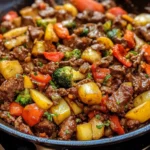
Easter Beef & Veggie Skillet
Ingredients
- 1.5 lbs Beef Stew Meat: Cut into 1-inch cubes, providing a hearty and flavorful base for the skillet.
- 1 tbsp Olive Oil: For sautéing and browning, adding healthy fats and enhancing flavor.
- 1 large Yellow Onion: Chopped, contributing sweetness and aromatic depth to the dish.
- 2 cloves Garlic: Minced, adding a pungent and savory note that complements the beef and vegetables.
- 1 lb Baby Potatoes: Halved or quartered if large, offering creamy texture and wholesome carbohydrates.
- 1 lb Asparagus: Trimmed and cut into 2-inch pieces, providing a fresh, spring-like flavor and vibrant green color.
- 1 cup Frozen Peas: Adding a touch of sweetness and vibrant green, easily incorporated for convenience.
- 2 medium Carrots: Peeled and sliced into rounds, contributing sweetness, color, and essential nutrients.
- 1 Red Bell Pepper: Cored, seeded, and chopped, adding sweetness, crunch, and vibrant color.
- 1 Yellow Bell Pepper: Cored, seeded, and chopped, complementing the red pepper with sweetness and visual appeal.
- 1 cup Beef Broth: Low sodium, providing moisture and enriching the savory flavors of the skillet.
- 2 tbsp Dijon Mustard: Adding a tangy and slightly spicy depth of flavor that balances the richness of the beef.
- 1 tbsp Worcestershire Sauce: Enhancing the umami and savory notes of the beef and sauce.
- 1 tsp Dried Thyme: Providing an earthy and aromatic herb flavor that complements beef and vegetables.
- 1 tsp Dried Rosemary: Adding a piney and fragrant herb note that pairs beautifully with beef and thyme.
- Salt: To taste, enhancing and balancing all the flavors in the skillet.
- Black Pepper: Freshly ground, to taste, adding a pungent spice and enhancing overall flavor.
- Fresh Parsley: Chopped, for garnish, adding freshness and a bright, herbaceous finish.
Instructions
- Prepare the Beef: Pat the beef stew meat dry with paper towels. This step is crucial for achieving a good sear and browning, which enhances the flavor of the beef. Season the beef generously with salt and pepper.
- Sear the Beef: Heat olive oil in a large skillet (preferably cast iron or oven-safe) over medium-high heat. Once the oil is hot and shimmering, add the beef cubes in a single layer, being careful not to overcrowd the pan. Sear the beef on all sides until nicely browned, about 2-3 minutes per side. Browning the beef creates a flavorful crust and seals in the juices. Work in batches if necessary to avoid overcrowding. Remove the seared beef from the skillet and set aside.
- Sauté Aromatics: Reduce the heat to medium. In the same skillet, add the chopped yellow onion and sauté until softened and translucent, about 5-7 minutes. Stir occasionally to prevent burning and ensure even cooking. Add the minced garlic and cook for another minute until fragrant, being careful not to burn the garlic.
- Add Potatoes and Carrots: Add the halved or quartered baby potatoes and sliced carrots to the skillet. Cook for about 8-10 minutes, stirring occasionally, until the potatoes are slightly softened and beginning to brown around the edges. This step helps to cook the denser vegetables before adding the quicker-cooking ones.
- Incorporate Bell Peppers and Asparagus: Add the chopped red and yellow bell peppers to the skillet and cook for another 5 minutes, stirring occasionally, until they are slightly softened but still crisp-tender. Then, add the asparagus pieces and cook for an additional 3-5 minutes, until they turn bright green and are crisp-tender.
- Deglaze and Simmer: Pour in the beef broth, scraping up any browned bits from the bottom of the skillet – these browned bits, known as fond, are packed with flavor and will enhance the sauce. Stir in the Dijon mustard and Worcestershire sauce. Bring the mixture to a simmer.
- Return Beef and Finish Cooking: Return the seared beef to the skillet, nestling it among the vegetables. Reduce the heat to low, cover the skillet, and let it simmer gently for about 15-20 minutes, or until the beef is tender and cooked through, and the vegetables are tender-crisp. If you prefer a thicker sauce, you can remove the lid during the last 5 minutes of simmering to allow some of the liquid to evaporate.
- Add Peas and Herbs: Stir in the frozen peas during the last 2-3 minutes of cooking, allowing them to heat through. Stir in the dried thyme and dried rosemary. Taste and adjust seasoning with salt and pepper as needed.
- Serve: Garnish the Easter Beef & Veggie Skillet with freshly chopped parsley. Serve hot, directly from the skillet for a rustic presentation, or portion onto plates.
Nutrition
- Serving Size: one normal portion
- Calories: 450
- Fat: 20g
- Protein: 35g
